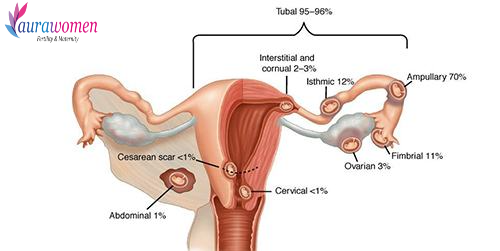
18 Apr Diminished Ovarian Reserve (DOR) – Causes, Symptoms, and Treatment
Diminished Ovarian Reserve (DOR) is a condition affecting women’s fertility, characterized by a decrease in the quantity and quality of eggs in the ovaries. This article delves into the causes, symptoms, and treatment options for DOR, shedding light on this significant aspect of reproductive health.
What is Diminished Ovarian Reserve (DOR)?

Diminished Ovarian Reserve (DOR) refers to a decline in the number and quality of eggs in a woman’s ovaries. This condition can lead to difficulties in conceiving naturally and is often associated with infertility issues.(1)
Understanding the Causes of Diminished Ovarian Reserve (DOR)
Diminished Ovarian Reserve (DOR) can result from various factors, including:
- Advanced Age: Women over 35 are more prone to DOR due to natural aging of the ovaries.
- Genetic Factors: Some women may have a genetic predisposition to early ovarian aging.
- Medical Treatments: Certain medical treatments like chemotherapy or radiation therapy can adversely affect ovarian function.
- Autoimmune Disorders: Conditions such as autoimmune diseases may impact ovarian reserve.
- Lifestyle Factors: Smoking, excessive alcohol consumption, and poor diet can contribute to DOR.
Must Read – IUI Treatment in Hindi? – आईयूआई उपचार क्या है?
Recognizing Symptoms of Diminished Ovarian Reserve (DOR)
While Diminished Ovarian Reserve (DOR) may not present noticeable symptoms in its early stages, some indicators include:
- Irregular Menstrual Cycles: Changes in menstrual cycles, such as shorter or longer cycles, can signal ovarian dysfunction.
- Difficulty Conceiving: Women with DOR may struggle to conceive, even with regular unprotected intercourse.
- Elevated Follicle-Stimulating Hormone (FSH) Levels: High levels of FSH in blood tests may indicate diminished ovarian function.
Must Read – Celiac Disease – Symptoms and Causes
Diagnostic Methods for Diminished Ovarian Reserve (DOR)
Diagnosing Diminished Ovarian Reserve (DOR) typically involves:
- Hormone Testing: Blood tests to measure levels of reproductive hormones like FSH, estrogen, and anti-Müllerian hormone (AMH).
- Ovarian Reserve Testing: Transvaginal ultrasound to assess ovarian follicle count and quality.
- Medical History and Physical Examination: Evaluation of menstrual history, reproductive health, and overall health status.
Must Read – Premature Ejaculation: Causes, Symptoms, and Treatment
Treatment Options for Diminished Ovarian Reserve (DOR)
Treatment for Diminished Ovarian Reserve (DOR) aims to improve fertility and may include:
- Ovulation Induction: Stimulating ovulation with medications like clomiphene citrate or letrozole.
- In Vitro Fertilization (IVF): Assisted reproductive technology involving the retrieval and fertilization of eggs outside the body.
- Donor Eggs: Using eggs from a donor in conjunction with IVF.
- Lifestyle Modifications: Adopting a healthy lifestyle by quitting smoking, reducing alcohol intake, and maintaining a balanced diet.
Must Read – What is Varicocele: Its Causes, Symptoms, Treatment, and Surgery
FAQs (Frequently Asked Questions)
Q: Can Diminished Ovarian Reserve (DOR) be reversed? A: While Diminished Ovarian Reserve (DOR) cannot be reversed, certain treatments can help improve fertility outcomes, such as IVF or ovulation induction.
Q: Is age the primary factor causing Diminished Ovarian Reserve (DOR)? A: Age is a significant factor in Diminished Ovarian Reserve (DOR), as ovarian function naturally declines with age, leading to decreased egg quantity and quality.
Q: Are there any natural remedies for Diminished Ovarian Reserve (DOR)? A: While lifestyle changes like maintaining a healthy diet, regular exercise, and reducing stress may support overall reproductive health, there’s limited evidence to suggest natural remedies can reverse DOR.
Q: Can Diminished Ovarian Reserve (DOR) lead to early menopause? A: In some cases, Diminished Ovarian Reserve (DOR) may precede early menopause, especially in women with severe ovarian depletion.
Q: What is the success rate of IVF for women with Diminished Ovarian Reserve (DOR)? A: The success rate of IVF in women with Diminished Ovarian Reserve (DOR) depends on various factors, including age, overall health, and response to ovarian stimulation, but it may be lower compared to women with normal ovarian function.
Q: Is Diminished Ovarian Reserve (DOR) a common condition? A: Diminished Ovarian Reserve (DOR) affects a significant number of women, particularly those over 35, but its prevalence varies among different populations.
Conclusion
Diminished Ovarian Reserve (DOR) presents challenges for women seeking to conceive, but with advancements in reproductive medicine and proactive management strategies, many can achieve successful pregnancies. By understanding the causes, symptoms, and treatment options for DOR, individuals can make informed decisions regarding their reproductive health.




No Comments